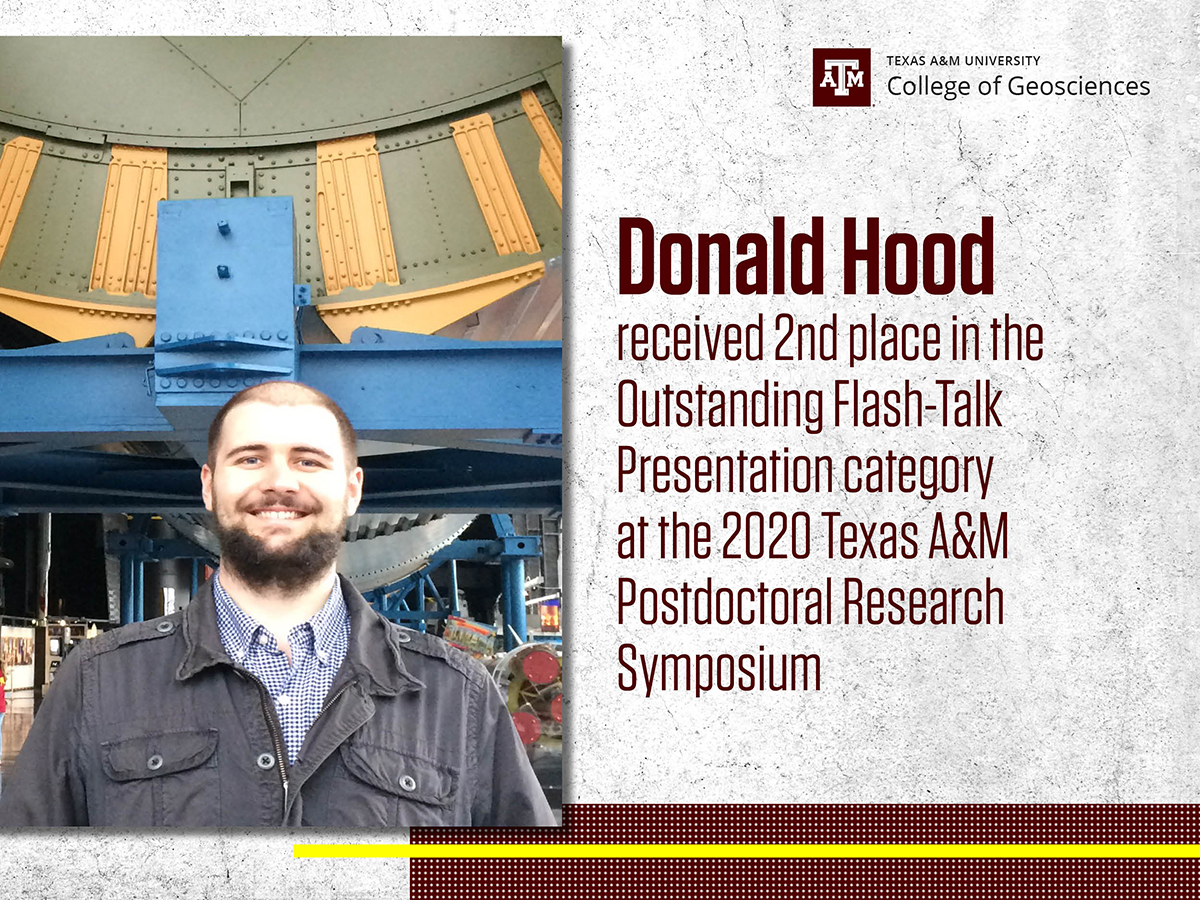Donald Hood Wins Award At Texas A&M Postdoctoral Research Symposium
The Department of Geology and Geophysics postdoctoral research associate received 2nd Place in the Flash-Talk Presentation competition at Texas A&M University’s Fourth Annual Postdoctoral Research Symposium.
Oct 30, 2020

Dr. Hood pictued in front of a Saturn V rocket at the NASA Marshall Space Flight Center, Huntsville, AL. His team collaborated with NASA to develop the code he presented on at the Postdoctoral Research Symposium. (Photo courtesy of Hood.)
Dr. Donald Hood, Department of Geology and Geophysics postdoctoral research associate, won second place in the Outstanding Flash-Talk Presentation category at Texas A&M University’s Fourth Annual Postdoctoral Research Symposium.
The symposium was held virtually on Sept. 23, with over 40 postdoctoral participants presenting their research to an audience of 162 fellow postdocs, faculty members, and staff from 17 institutions. Six postdoctoral researchers received awards in the two categories, Outstanding Flash-Talk Presentation and Outstanding Poster Presentation.
Hood presented his research on the Martian Boulder Automatic Recognition System (MBARS), a toolset he developed to detect and measure boulders on the martian surface.
The ability to quickly and consistently measure boulders on planetary surfaces, not just Mars, is very powerful for a number of applications, he said. By knowing the location and size of boulders, we can better understand the geologic processes that create them (i.e. meteor impacts), as well as the erosive processes that break them down.
In addition, boulders are a major hazard for landing and rover operations, and landing sites are thoroughly inspected for potential hazards before missions are launched, Hood said. Automating this process has numerous benefits, one of which is that this analysis can now be done faster, even as the craft is landing, allowing the craft to pick the safest landing site.
“I participated in the symposium as a way to encourage myself to keep moving forward with the research, among other priorities,” Hood said. “This has been a great reminder that you never know which opportunity you take is going to turn into something bigger, so keep your eyes open!”
The symposium was organized by the Texas A&M Postdoctoral Association, the Health Science Center Postdoctoral Association, and the College of Veterinary Medicine and Biomedical Sciences Postdoctoral Association.
By Ali Snell
